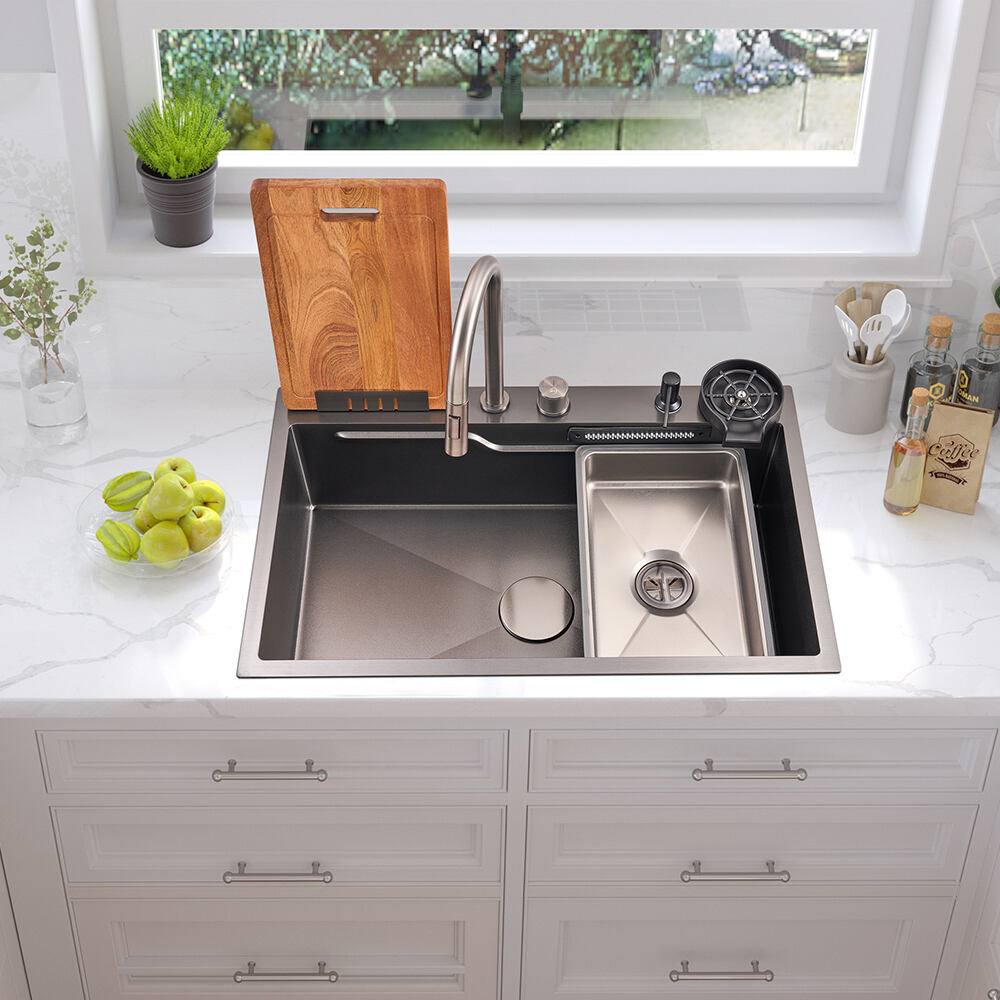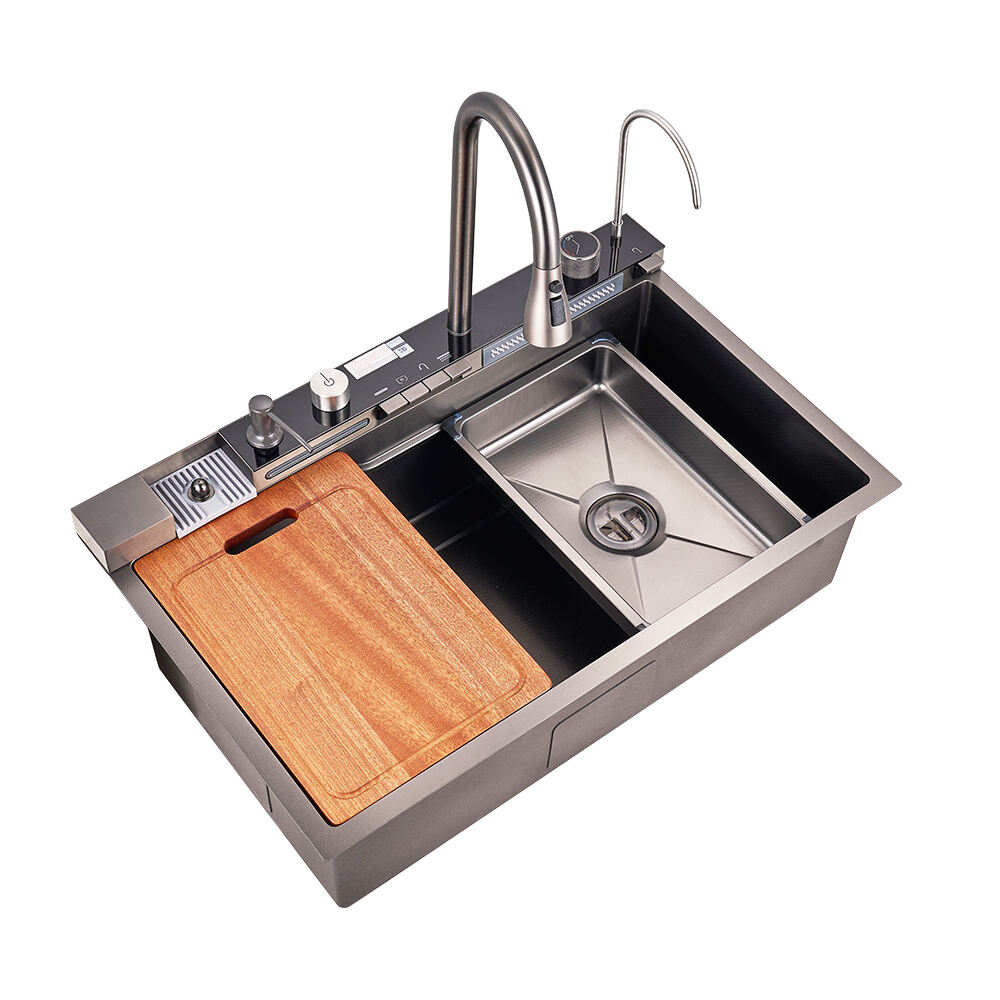The Evolution of Modern Kitchen Technology: Smart Sinks Leading the Way
The heart of every home, the kitchen, has undergone a remarkable transformation in recent years. Among the most innovative developments is the smart kitchen sink, a revolutionary appliance that combines cutting-edge technology with practical functionality. As homeowners increasingly embrace smart home solutions, the integration of intelligent features into kitchen fixtures has become not just a luxury, but a necessity for modern living.
Today's smart kitchen sink goes far beyond the basic functions of water dispensing and drainage. These sophisticated fixtures incorporate sensors, digital controls, and automated features that enhance both efficiency and user experience. Understanding what makes a smart kitchen sink truly 'smart' is crucial for making an informed decision when upgrading your kitchen.
Essential Smart Sink Technologies
Touchless Operation Systems
Modern smart kitchen sink designs prioritize hygiene and convenience through touchless operation. Advanced motion sensors detect hand movements to activate water flow, allowing users to wash dishes or fill containers without physical contact. This feature is particularly valuable when handling raw foods or when hands are soiled from cooking.
The sophistication of these sensors extends to precise control over water temperature and flow rate. Some models even remember your preferred settings, creating a personalized experience every time you use the sink. Voice-activated controls further enhance the hands-free experience, enabling users to specify exact water quantities or temperatures through simple verbal commands.
Water Management Capabilities
Smart kitchen sink systems excel in water conservation and usage monitoring. Built-in flow meters track water consumption in real-time, providing detailed analytics through smartphone apps. This data helps homeowners identify usage patterns and potential leaks, leading to more sustainable water management practices.
Advanced models feature programmable water dispensing, allowing users to preset specific quantities for common tasks like filling pots or water bottles. Some systems even integrate with home automation platforms to alert users about unusual water usage patterns or potential problems requiring maintenance.
Material and Design Considerations
Durability and Maintenance
The integration of technology demands robust materials that can withstand daily use while protecting sensitive components. Premium smart kitchen sink models typically feature high-grade stainless steel or composite materials with specialized coatings that resist scratches, stains, and bacterial growth.
Self-cleaning surfaces and antimicrobial treatments are becoming standard features, reducing maintenance requirements while ensuring hygiene. Some models incorporate UV sanitization systems that automatically disinfect the sink basin at scheduled intervals, providing an extra layer of cleanliness.
Ergonomic Design Elements
Modern smart kitchen sink designs prioritize user comfort and accessibility. Thoughtfully positioned sensors and controls minimize reaching and stretching, while optimized basin depths reduce back strain during extended use. LED lighting systems illuminate the workspace effectively, making it easier to clean and prepare food in low-light conditions.
Multi-tiered basins and integrated workstations maximize functionality in limited spaces. Collapsible drying racks, cutting boards, and colanders that fit seamlessly into the sink design transform it into a comprehensive food preparation center.

Smart Integration Features
Connectivity Options
Today's smart kitchen sink systems offer seamless integration with home automation networks. WiFi and Bluetooth connectivity enable remote monitoring and control through dedicated mobile apps. Users can check water usage, adjust settings, and receive maintenance alerts from anywhere.
Integration with virtual assistants like Alexa or Google Home extends functionality through voice commands. Some systems can even synchronize with other smart kitchen appliances, creating coordinated cooking and cleaning workflows.
Smart Monitoring Systems
Advanced sensors in smart kitchen sinks do more than control water flow. They monitor water quality, temperature, and pressure in real-time. Integrated leak detection systems can automatically shut off water supply if unusual patterns are detected, preventing potential water damage.
Some models feature predictive maintenance capabilities, analyzing usage patterns and performance metrics to anticipate potential issues before they become problems. This proactive approach helps maintain optimal performance and extends the system's lifespan.
Frequently Asked Questions
How much does a smart kitchen sink typically cost?
Smart kitchen sinks range from $500 to $3000 or more, depending on features and materials. Basic models with touchless operation start at the lower end, while fully integrated systems with comprehensive smart features command premium prices. Installation costs typically range from $200 to $500, depending on complexity.
Can smart kitchen sinks be installed in existing kitchens?
Most smart kitchen sinks can be retrofitted into existing kitchen layouts, though some modifications may be necessary for power supply and smart home integration. It's recommended to consult with a professional installer to assess compatibility with your current plumbing and electrical systems.
How reliable are the electronic components in smart kitchen sinks?
Modern smart kitchen sinks are designed with durability in mind, featuring water-resistant electronics and robust sensors. Quality models typically come with warranties of 3-5 years on electronic components. Regular maintenance and proper usage can extend the life of these systems well beyond the warranty period.
What happens if there's a power outage?
Most smart kitchen sinks include manual override features that allow basic functionality during power outages. While advanced features may be temporarily unavailable, the sink will continue to operate for essential tasks. Some models also include backup power systems for critical functions.



